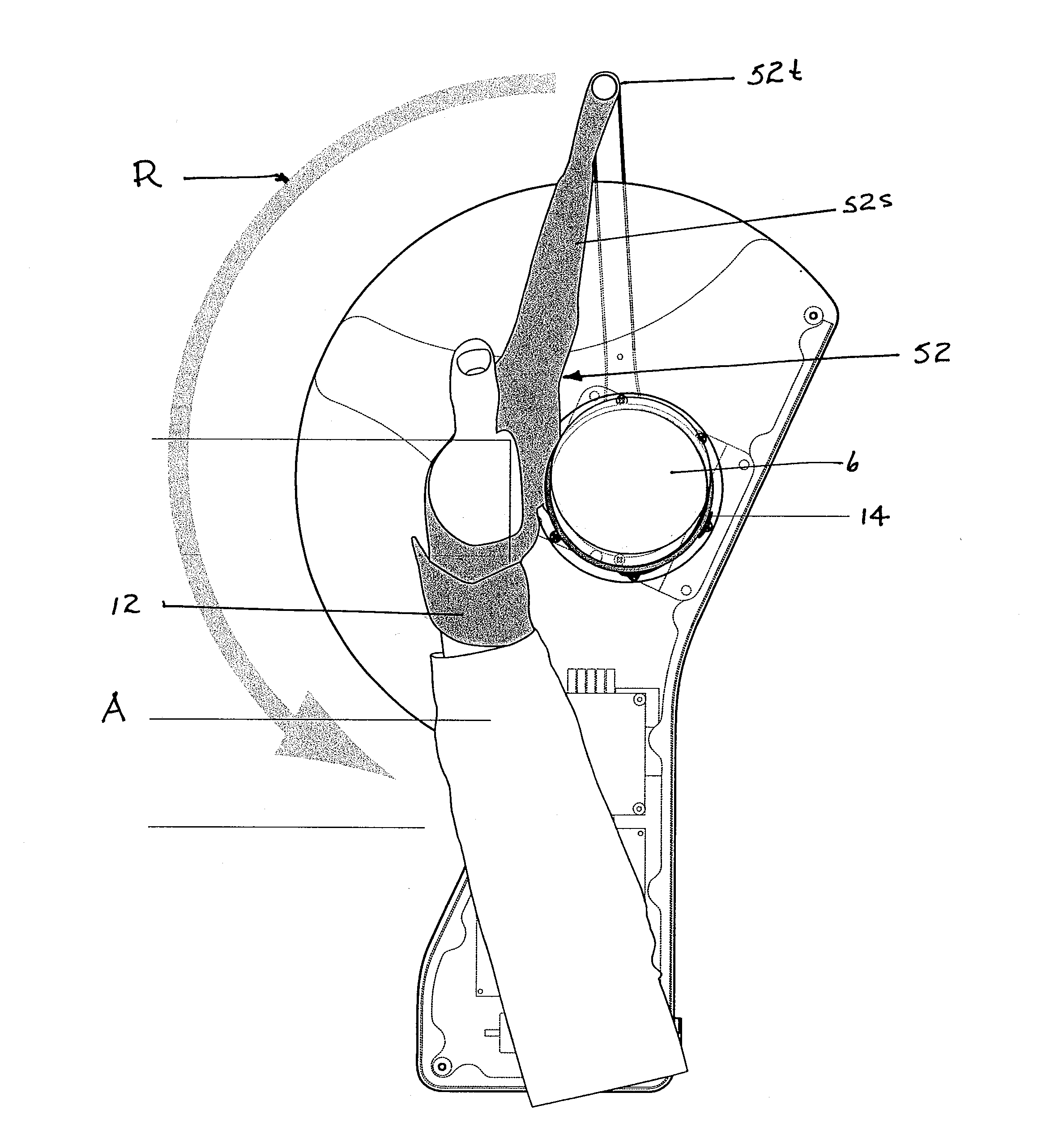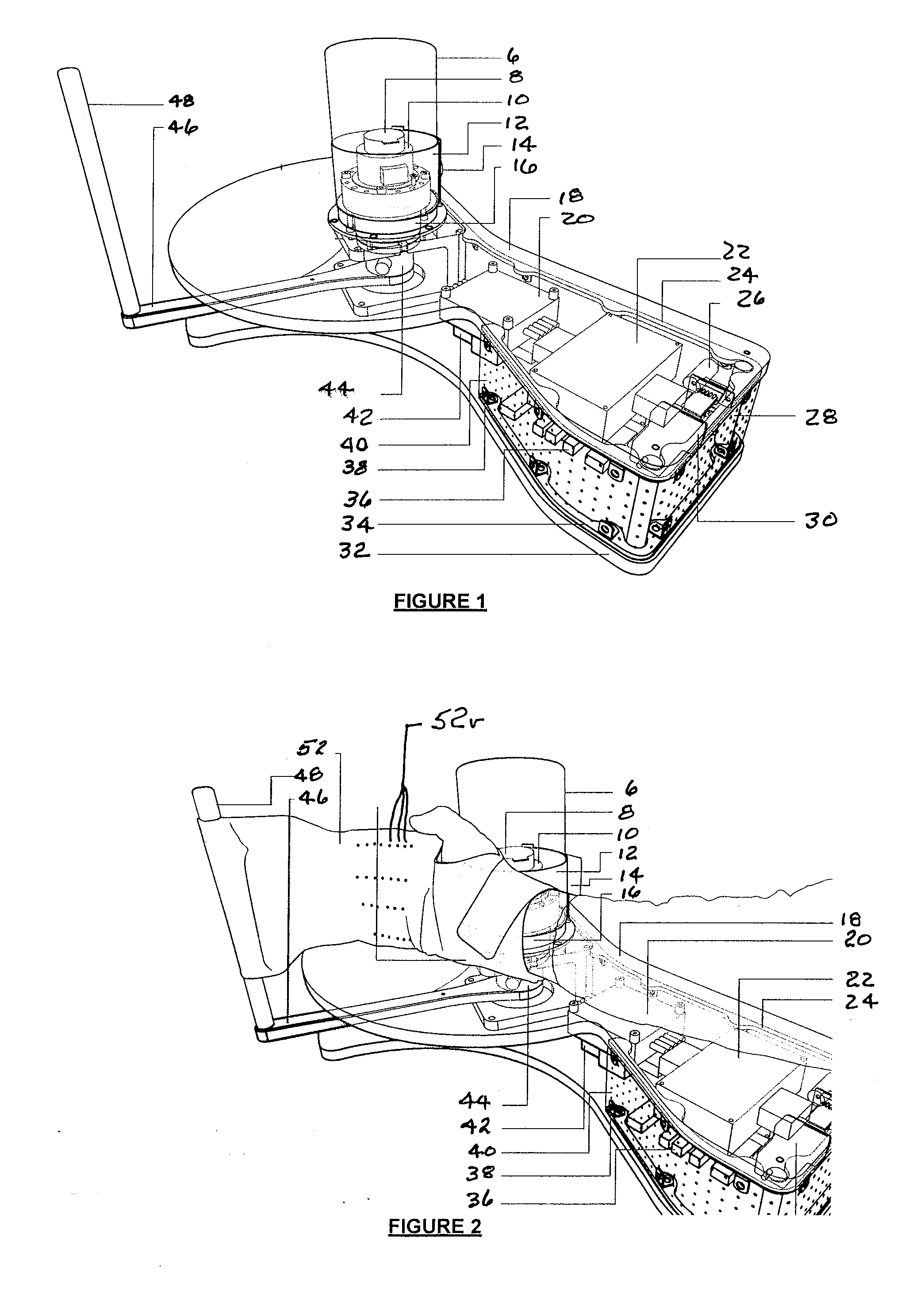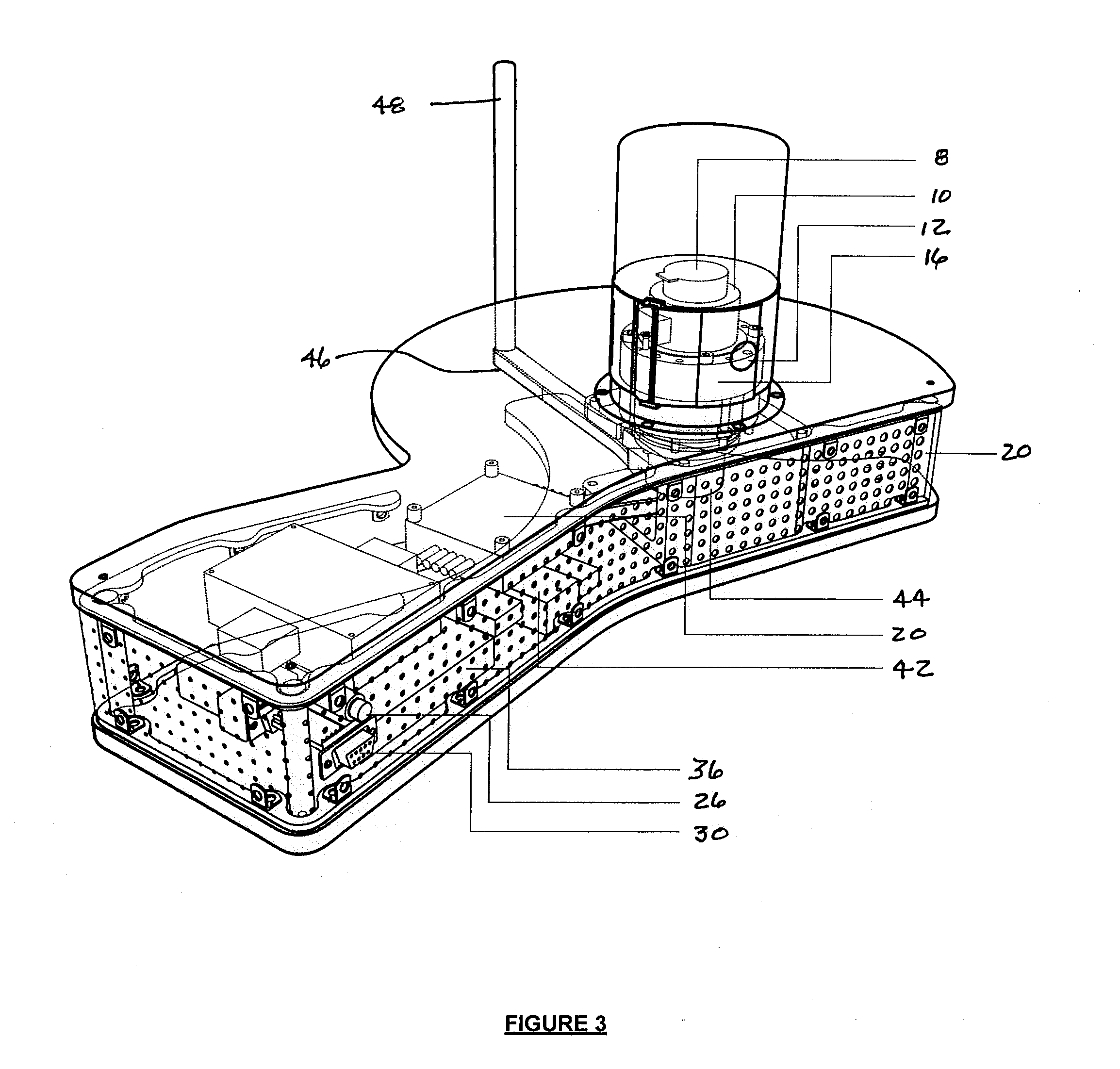Rehabilitative apparatus for treating reflex sympathetic dystrophy
- Summary
- Abstract
- Description
- Claims
- Application Information
AI Technical Summary
Benefits of technology
Problems solved by technology
Method used
Image
Examples
Embodiment Construction
[0053]FIG. 1 shows the preferred embodiment of the apparatus of the present invention adapted for pronation-supination therapy and for flexion-extension therapy, designated generally by the numeral 2. The embodiment of rehabilitative apparatus 2 for treatment of reflex sympathetic dystrophy (RDS) shown in FIG. 1 through 12. The apparatus 2 includes a motor housing 6 forming a cylindrical post and mounted in structural channel 4, against which the articulating hand or wrist glove (later described) is affixed. The post 6 covers motor 10 (such as a Maxon EC 45 Flat (50-watt) with encoder) and Gear Head 16 (such as Harmonic DriveCSG14) which articulates handle 48 via arm 46 which is attached to the shaft of the motor 10. Mounted on top of the motor 10 is encoder / position sensor 8 (such as a Maxon MR Encoder, PN 228182) which senses the position and / or speed of the HD / gearhead 16 unit. The signal is sent to the motor control board 36 to be processed as part of the control algorithm. Duri...
PUM
 Login to View More
Login to View More Abstract
Description
Claims
Application Information
 Login to View More
Login to View More - R&D
- Intellectual Property
- Life Sciences
- Materials
- Tech Scout
- Unparalleled Data Quality
- Higher Quality Content
- 60% Fewer Hallucinations
Browse by: Latest US Patents, China's latest patents, Technical Efficacy Thesaurus, Application Domain, Technology Topic, Popular Technical Reports.
© 2025 PatSnap. All rights reserved.Legal|Privacy policy|Modern Slavery Act Transparency Statement|Sitemap|About US| Contact US: help@patsnap.com



